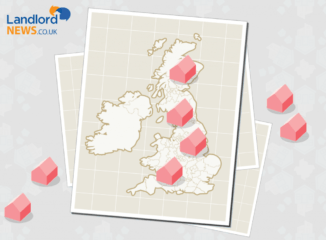Government releases latest data for average UK house prices
The latest government House Price Index records the average UK property price as £270,708 for November 2021.
This is a 10.0% annual increase and a 1.2% monthly increase.
Iain McKenzie, CEO of The Guild of Property Professionals, comments: “The average home now costs over £270,000, and with an annual price change of 10%, it’s sobering to think that buyers are now paying £27,000 more than they did at the tail end of 2020.
“These figures include the annual rush to snap up property ahead of Christmas and the New Year, with buyers keen to move in ahead of the holidays.
“The one constant in the last few months of housing data is a strong, confident rise in prices, driven by the imbalance between supply and demand.
“Estate agents’ portfolios are at historic lows, with many branches having a dozen or fewer properties to sell, and there is no sign of this situation changing.
“Despite rising inflation, consumer confidence is high, and growing optimism that the Omicron wave is waning will continue to push house prices steadily higher.”
James Forrester, Managing Director of Barrows and Forrester, comments: “Any fears that the end of the stamp duty holiday would bring about a decline in house price growth can now be well and truly put to bed. Not only has the market maintained momentum, but it’s continued to shift through the gears during what is usually a quieter period in the year.
Expect more of the same in 2022, as demand remains robust, stock remains scarce and the cost of borrowing remains very affordable.”
Marc von Grundherr, Director of Benham and Reeves, comments: “It’s extremely reassuring to see such a sustained run of positive price growth and while the government stimulus of a stamp duty reprieve helped to kick start this pandemic property market defiance, it’s now abundantly clear that the sector is standing tall on its own two feet.
“A slight slow in pace is inevitably on the cards as the industry took a well earned break during the Christmas period, but we’ve seen strong signs already this year that this market momentum has carried on where it left off in 2021.”
Geoff Garrett, Director of Henry Dannell, says: “Despite an increase in interest rates, the cost of borrowing remains very favourable for the nation’s homebuyers and we’re yet to see this appetite dampened by the marginal jump introduced by the Bank of England towards the end of last year.
“In fact, it’s those purchasing with the help of a mortgage who are driving the hefty rates of house price growth currently being seen, as many borrow that little bit extra to buy bigger in the wake of pandemic lockdown restrictions. Not only is the average rate of growth higher for mortgage buyers versus cash buyers, but detached homes continue to lead the pack where house price growth by property type is concerned.”
Craig Tonkin, Bective’s Head of Sales, says: “While London is still lagging behind where top line price appreciation is concerned, we’ve seen a healthy level of activity return to the capital over the last year and this looks set to continue in 2022 with foreign demand expected to drive an uplift in transactions and sold prices.
Of course, the pandemic influence of the last 18 months remains clear with many buyers across the core market looking to the likes of Wandsworth due to the greater abundance of larger family homes. However, at the very top price thresholds of the market, the prime central heartlands of Kensington and Chelsea and Westminster remain some of the most active areas.”
The full report is available on the HM Land Registry website.




